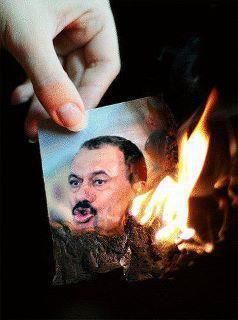Warm Downs: Effectively Ending ESL/EFL Lessons
James Andrew Farmerjamesandrewfarmer {=at=} gmail.com
Saitama University (Saitama City, Japan)
This article presents the warm down as an effective way to end an ESL/EFL lesson. First, the purpose of the warm down is discussed. This is followed by an outline of what instructors can do along with practical examples.
Introduction
Most instructors are aware of the importance of the warm up in the ESL/EFL classroom. An effective warm up gets the students thinking in English, allows them to relax and start thinking towards the topic, and gives the instructor a chance to monitor their abilities and perhaps reassess their lesson plan. However, an equally important, but often neglected stage of an effective lesson is the warm down. Many instructors simply haven't considered how to end a lesson or if they have, don't know how to wrap it up. More often than not, instructors are happy to let an activity run through to the end of class. In this paper I will outline the purpose of the warm down and provide practical ideas and examples of what instructors can do to effectively wrap up a lesson.The Purpose of the Warm Down
The warm up and warm down work together as the bookends of a lesson. Just like an essay needs a clear introduction and a conclusion, so too does an effective lesson. Instructors often run the final lesson activity until the lesson's end. However, allowing students to do free activities (role plays, discussions, etc.) until the end of class and suddenly concluding the lesson leaves students without closure. Even worse, the students may be left feeling the instructor was disorganized and ran out of time, or worse, was just killing time. Neither situation portrays the instructor in a positive light. On the other hand, the warm down signifies to the students that the class will soon be over and gives the lesson a clear end. An effective warm down will also leave the class with a clear understanding of what they learned and is an opportunity for teachers to address any loose ends. Hence, instructors should dedicate the final five minutes of class, depending on the length of the lesson, to a warm down.What Can Instructors do in the Warm Down?
An effective warm down can involve correction, reviewing the target language, and/or giving performance feedback and motivation. This is also the time where homework should be assigned. It must be noted that this is not the time to be introducing new material. Doing so will detract from the effectiveness of this stage.Correction
The warm down is a great opportunity to facilitate correction. Generally speaking, the latter half of a lesson is the freer, meaning-focused stage of the lesson. This gives students the opportunity to play with the new language in a context-rich environment while integrating it with previously learned language. Unlike in the earlier form-focused stage of the lesson where the target language was introduced, practiced, and reinforced, the instructor should try not to interrupt activities to give correction. The focus should be on language use and fluency building, but this doesn't advocate ignoring mistakes. Rather, the instructor should take notes of any major and/or persistent mistakes with the target language, as well as level-relevant target language, and address them between activities or in the warm down.Besides not interrupting a student's train of thought during a final activity, correcting during the warm down has the advantage that the whole class benefits from the correction. This brings up the question of what instructors should correct. Note that I have used the term "mistake" in order to distinguish it from an "error". As defined in Brown (2007:257-259) a mistake is simply a slip of the tongue. It's a case of where the student knows better and if prompted, they should be able to correct it. An error is made when the student doesn't know better: they have never studied that target language before or they simply aren't ready to use it yet. I further suggest that mistakes can be further categorized: mistakes with the target language and those with previously-learned, level-relevant target language. While both can be addressed, the former gets priority considering its acquisition is the goal of the lesson. Mistakes can include pronunciation, vocabulary, grammar and appropriateness of use.
There is no need to correct every mistake during the warm down. Instructors should choose the major mistakes, three to five is a manageable number, and put them on the board. Draw the class' attention to each one eliciting the correction. In the case of poor pronunciation, the instructor can model trouble word aloud with the poor pronunciation to elicit the correct pronunciation. However, correction shouldn't end here. Instructors should follow up with a quick activity to reinforce the correct form. This can be as simple as doing a choral drill and/or eliciting one or two example sentences. For example, the Instructor could address "I went to shopping" as follows.
Instructor: (after writing it on the board) Is this a good sentence?
Student/s: No.
I: Why? What's the problem?
S: To.
I: Good. What's the correct sentence?
S: I went shopping.
I: That's right. Why do we say "went shopping" and not "went to shopping"?
S: Shopping is not a place. We use "to" for places.
I: For example?
S: I went to Tokyo.
I: Good. So, shopping isn't a place. It is an activity. What are some other activities ending with -ing?
S: Dancing.
I: Right. Give an example sentence.
S: I went dancing.
I: And..?
Student/s: No.
I: Why? What's the problem?
S: To.
I: Good. What's the correct sentence?
S: I went shopping.
I: That's right. Why do we say "went shopping" and not "went to shopping"?
S: Shopping is not a place. We use "to" for places.
I: For example?
S: I went to Tokyo.
I: Good. So, shopping isn't a place. It is an activity. What are some other activities ending with -ing?
S: Dancing.
I: Right. Give an example sentence.
S: I went dancing.
I: And..?
By doing this the students are more likely to leave the class with the correction clear in their minds. For students in the class who didn't make the mistake, it serves to further reinforce the correct pattern.
Review
Another effective way to wrap up the lesson is to review the lesson. Not only does this reinforce students' understanding of the language, but they leave with a clear idea of what they learned. It can also boost confidence as it allows the students to compare their progress from the beginning of the lesson and the end.Instead of the traditional method of an instructor telling the class what they learned, elicitation can be more effective. Asking the students what they learned keeps teacher talk time low, allows the instructor to assess if the students really understood the lesson, and actively encourages the students to think about the lesson.
Review can include the target language, new vocabulary, and pronunciation as well as newly-learned information such as information from a news article. Instructors can review these points by reusing flashcards to review vocabulary, re-reading questions from a worksheet to elicit the answers, rereading answers and eliciting the questions, asking some questions, or eliciting what they learned. Here is an example dialogue of an instructor eliciting what the students had learned:
I: What did you learn today?
S: The present perfect.
I: Good. How did you use it?
S: We talked about traveling experiences.
I: We learned a question pattern today. What was it?
S: "Have you (verb)?"
I: Good. Can you give me some examples?
S: Have you eaten sushi?
I: Good. Ask (student's name).
S1: Have you eaten sushi?
S2: Yes, I have. I have eaten sushi.
I: …
S: The present perfect.
I: Good. How did you use it?
S: We talked about traveling experiences.
I: We learned a question pattern today. What was it?
S: "Have you (verb)?"
I: Good. Can you give me some examples?
S: Have you eaten sushi?
I: Good. Ask (student's name).
S1: Have you eaten sushi?
S2: Yes, I have. I have eaten sushi.
I: …
Performance Feedback and Motivation
Feedback and motivation is often restricted to a perfunctory "Good work!" It’s a good practice to give more detailed feedback including both a strength and weakness. The strength will provide motivation to continue studying whereas the weakness gives them something concrete to work on and also encourages the student to keep studying.In a small class it is possible to give each student 15-20 seconds of individual feedback. Instructors can give a positive and a to-be-worked-on point to each student. For example, "Maya, you used today's new vocabulary well, but you have to be careful with past tense of irregular verbs." This comes with two caveats. First, bear in mind that some students don't appreciate this approach. Second, in lower level classes some students may not be able to understand.
In a larger class where individual feedback is not possible, a general comment on the class' performance will suffice. For instance, "Everyone used 'the simple past' well, but remember to use Wh-questions to get more information." Even better, the instructor can recommend a lesson in the text or class in the curriculum which addresses the weakness.
Assigning Homework
In a meta-study, Walberg, Paschal, & Weinstein (1985:79) concluded that 'there seems little doubt that homework has substantial effects on students' learning'. However, there seems to be a lack of research on whether homework assists second language acquisition for ESL/EFL learners. In one study, Wallinger (2000) found little evidence that homework either contributes or detracts from foreign language learning. Anecdotal evidence provides some support for a correlation between homework and achievement. Hence, assigning homework should be part of any class. Homework allows the students to revisit the lesson in their own time which can work to build their understanding and retention. Furthermore, it also encourages students to take responsibility for their own learning thereby promoting autonomous learning. That being said, the importance of homework needs to be balanced with the students' needs, motivation, and time.Homework is best set at the end of the warm down. The task should be simple and clear. Homework activities don’t need to be sophisticated. The main goal is to have the students revisit the class to reinforce the material. Students need to be exposed to new words multiple times before the meaning is remembered. In fact, some studies have found that learners need to have up to sixteen meaningful encounters with a new word just to establish it in the students vocabulary bank (Paul Nation 2001 cited in Lightbown & Spada 2006:98). Doing homework assists in this.
Collecting homework at the beginning of each lesson, promptly marking and returning it to the students helps students see the benefit of participating. Rather than correcting the homework, consider highlighting problems and returning it to the students to self-correct. This will build self-correction skills (Ferris & Roberts 2001), retention (Chandler 2003), and accuracy (Li & Lin 2007). The students can then resubmit the homework for a final correction. It can also be effective if the instructor provides all students with a 'correction key' which outlines different markings for different problems. For example, '^' could indicate a missing word and an underlined word a problem with spelling. This draws the learner's attention to the problem and allows them to build their cognitive strategies. The more detailed the cues are, the higher the chance of learner self-correction (Makino 1993).
Here are some homework ideas for a lesson on the simple past:
- What did you do yesterday? What didn’t you do? Write five answers for each.
- Write example sentences for the verbs introduced in the lesson.
- Write a story about last weekend.
- Listen to the textbook's CD until you can understand 90% (for listening).
- Do the worksheet.
- Write a diary. Talk about what you did each day.
Conclusion
In conclusion, a five to ten minute warm down is a good way to effectively wrap up an EFL class. The warm down signifies to the students that the class is coming to an end, leaves the students with a clear understanding of what they learned, and gives the instructor a last opportunity to reinforce the target language. This is achieved through giving correction, reviewing the lesson, and/or giving constructive feedback and motivation.References
- Brown, H.D. 2007, Principles of Language Learning and Teaching, Pearson Longman, New York.
- Chandler, J. 2003, ‘The efficacy of various kinds of error feedback for improvement in the accuracy and fluency of L2 student writing’, Journal of Second Language Writing, vol. 12, no. 3, pp. 267-296.
- Ferris, D. & Roberts, B. 2001, ‘Error feedback in L2 writing classes: how explicit does it need to be?’, Journal of Second Language Writing, vol. 10, no. 3, pp. 161-184.
- Li, H. & Lin, Q. 2007, 'The role of revision and teacher feedback in a Chinese college context', Asian EFL Journal, vol. 9, no. 4. Retrieved on 16 March 2009 from www.asian-efl-journal.com.
- Lightbown, P.M. & Spada. 2006, How Languages are Learned, Oxford University Press.
- Makino, Taka-Yoshi. 1993, 'Learner self-correction in EFL written compositions', ELT Journal, vol. 47, no. 4, pp. 337-341. Abstract retrieved October 7 2009 from eltj.oxfordjournals.org.
- Walberg, H.J., Paschal, R.A., & Weinstein, T. 1985, 'Homework's Powerful Effects on Learning', Educational Leadership, vol. 42, no. 7, pp. 76-79.
- Wallinger, L.M. 2008, 'The Role of Homework in Foreign Language Learning', Foreign Language Annals, vol. 33, no. 5, pp. 483-496. Abstract retrieved October 31 2009 from the Wiley Interscience database.










